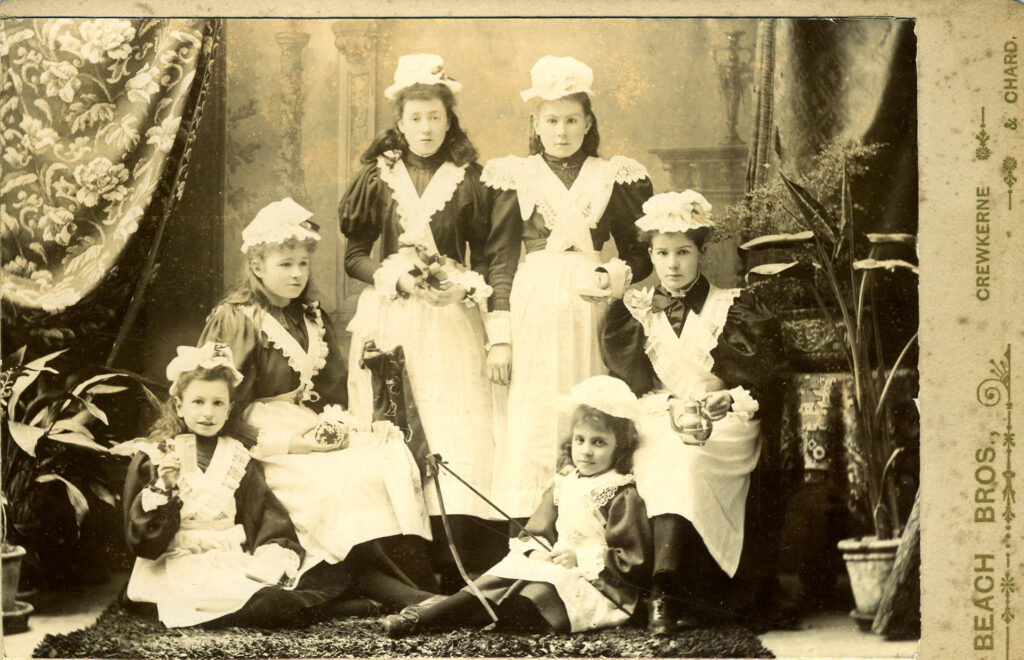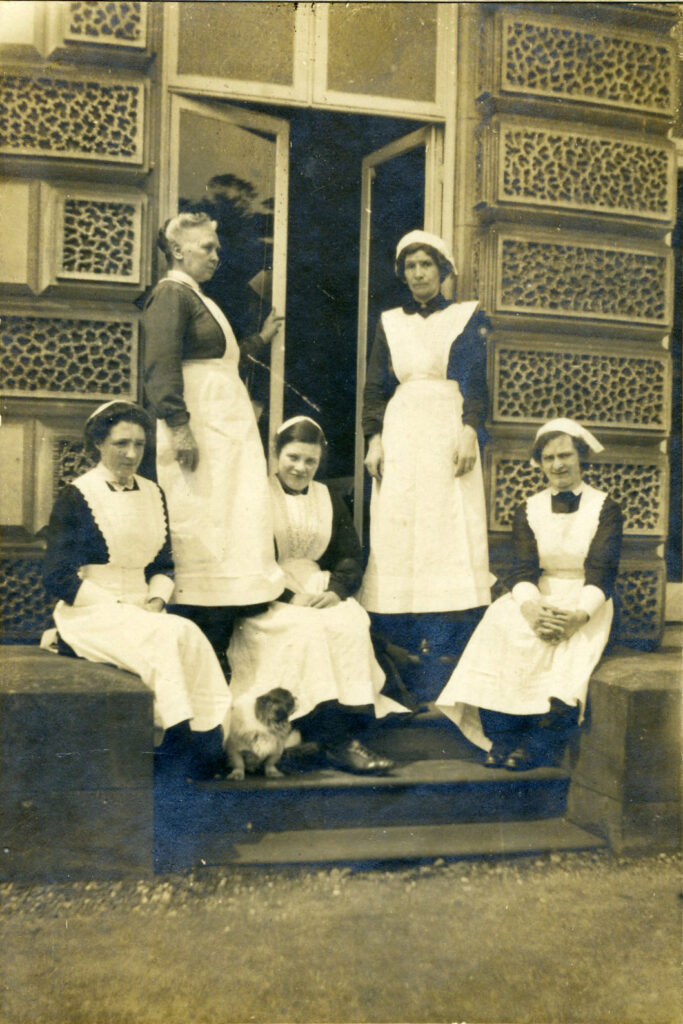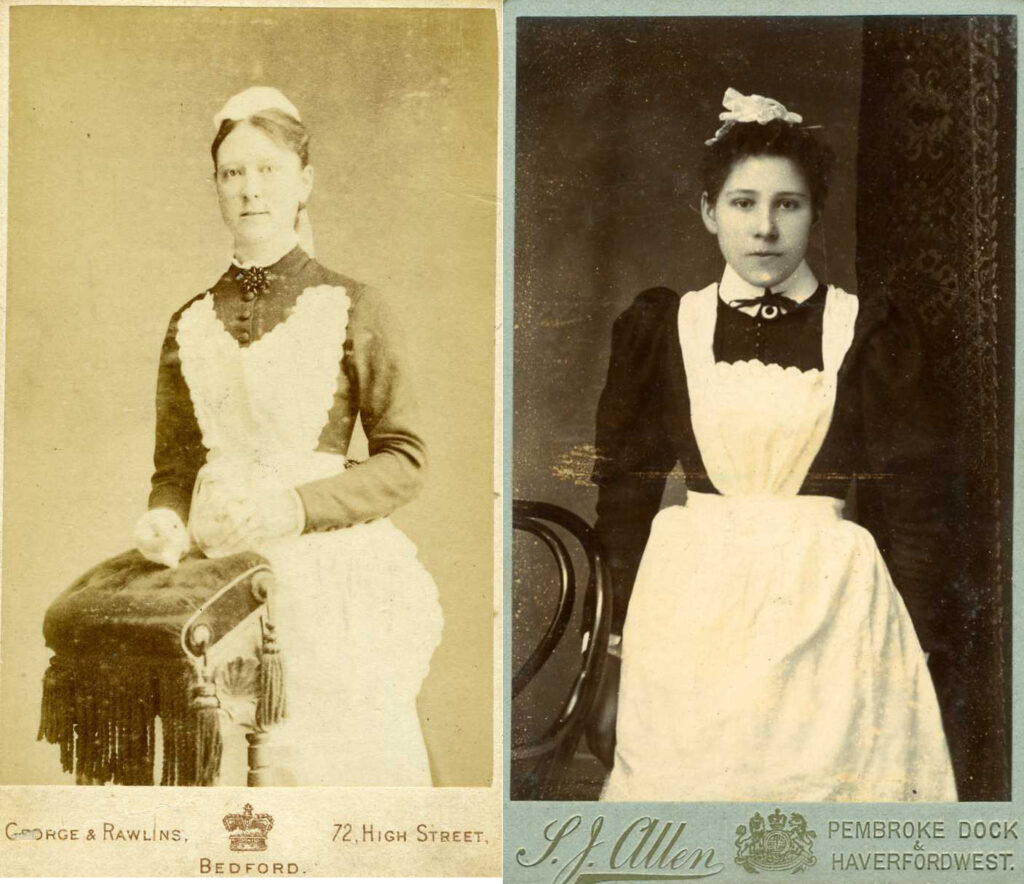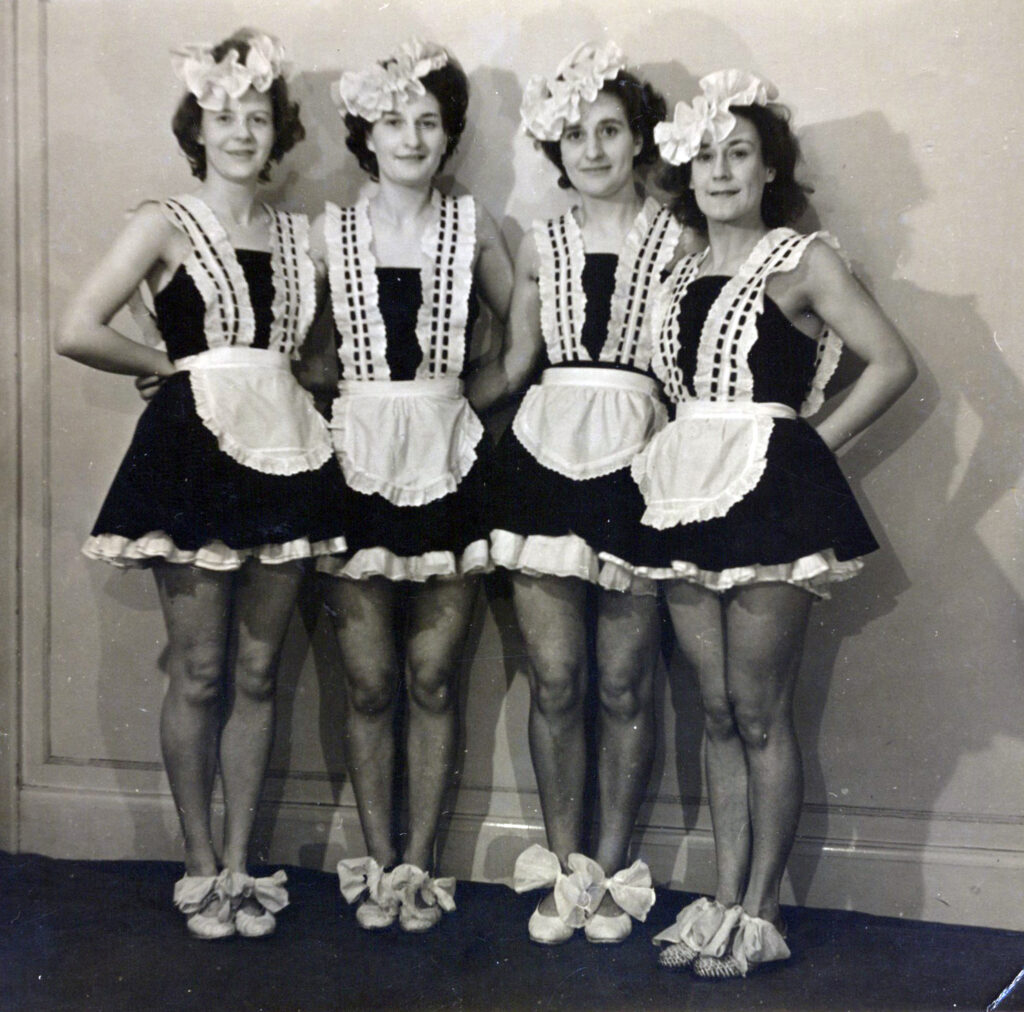
This is probably what most people think of when imagining Victorian maidservants.
“Parlour maids” is written in pencil on the back of this cabinet card but that was probably added recently. I suspect they were a mixture of different types of maid from a household as servants each had different functions – scullery maid, chamber maid etc. The two girls seated at the front look rather young but girls started in service as young as eight.

This is rather more Downton Abbey (not that I’ve ever watched it) and again what you’d expect. Note there’s a dog amongst the maids too.

Being a maid was not a glamorous job. The hours were long, the jobs dirty and demanding and women in service would be miles away from their families and rarely given time off to visit them. Nevertheless some families thought well enough of their maids to have them photographed.

Troupes of “maids” were a popular entertainment in the music halls though they bore little resemblance to real maids.


For some reason there was a mania for dressing as dairymaids.

Maids on stage are popular to this day. Hard to date this one but probably the 1930s or 40s.

And here’s Gladys Cooper attended by her maid in the play Excelsior from 1928. I’ll write about Gladys in a later blog. She was arguably the first woman to exploit her image on postcards and sold hundreds of thousands of them. It was said that nearly every soldier in the first world war trenches had a postcard of her in his tobacco tin.
[There’s a whole subculture of Victorian working women such as pit brow women. There’s also a fascinating book on Victorian Working Women by Michel Hiley which covers pit brow women, women miners, fishergirls, milkwomen, gymnasts etc]